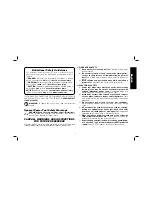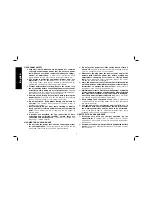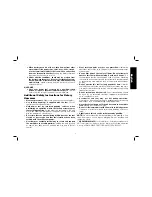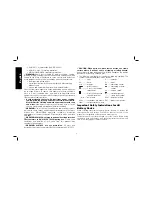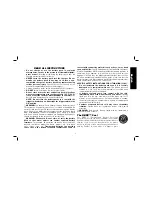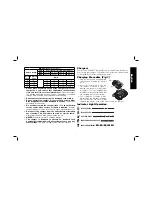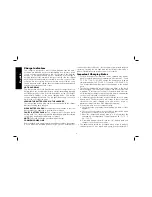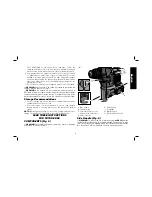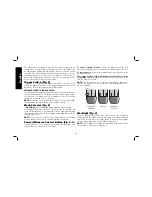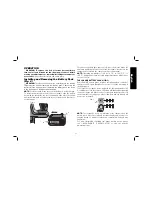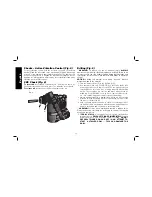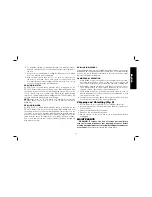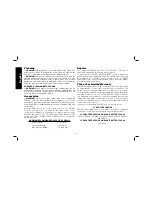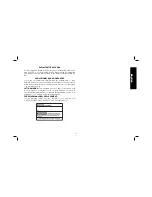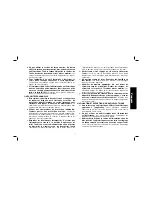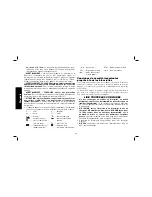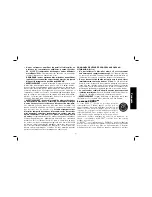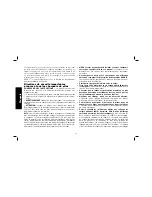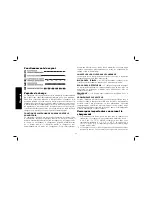
9
English
FIG. 2
A
B
D
C
E
G
F
I
J
H
K
A. Side handle
E. Main handle
B. Trigger switch
F. Worklight
C. Forward/reverse control
G. Battery pack
button (Lock-off button)
H. Battery release button
D. Mode selector
Side Handle (Fig. 2)
WARNING:
To reduce the risk of personal injury,
ALWAYS
operate
the tool with the side handle (A) properly installed. Failure to do so may
result in the side handle slipping during tool operation and subsequent
loss of control. Hold tool with both hands to maximize control.
NOT CONTINUE to use under these conditions. Follow the
charging procedure. You may also charge a partially used pack
whenever you desire with no adverse effect on the battery pack.
6. Foreign materials of a conductive nature such as, but not limited
to, grinding dust, metal chips, steel wool, aluminum foil, or any
buildup of metallic particles should be kept away from charger
cavities. Always unplug the charger from the power supply when
there is no battery pack in the cavity. Unplug the charger before
attempting to clean.
7. Do not freeze or immerse the charger in water or any other liquid.
WARNING:
Shock hazard. Don’t allow any liquid to get inside the
charger. Electric shock may result.
WARNING:
Burn hazard. Do not submerge the battery pack in
any liquid or allow any liquid to enter the battery pack. Never attempt
to open the battery pack for any reason. If the plastic housing of the
battery pack breaks or cracks, return to a service center for recycling.
Storage Recommendations
1. The best storage place is one that is cool and dry, away from direct
sunlight and excess heat or cold.
2. For long storage, it is recommended to store a fully charged
battery pack in a cool dry place out of the charger for optimal
results.
NOTE:
Battery packs should not be stored completely depleted of
charge. The battery pack will need to be recharged before use.
SAVE THESE INSTRUCTIONS
FOR FUTURE USE
COMPONENTS (Fig. 2)
WARNING:
Never modify the power tool or any part of it. Damage
or personal injury could result.



